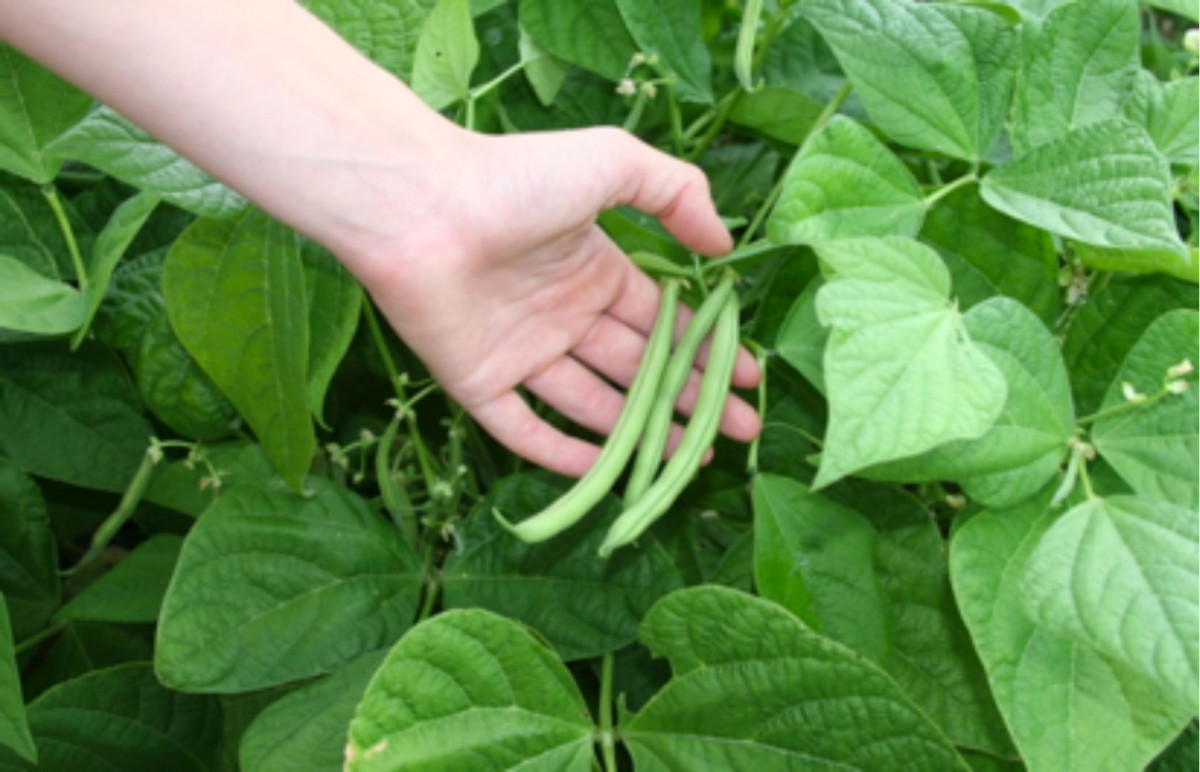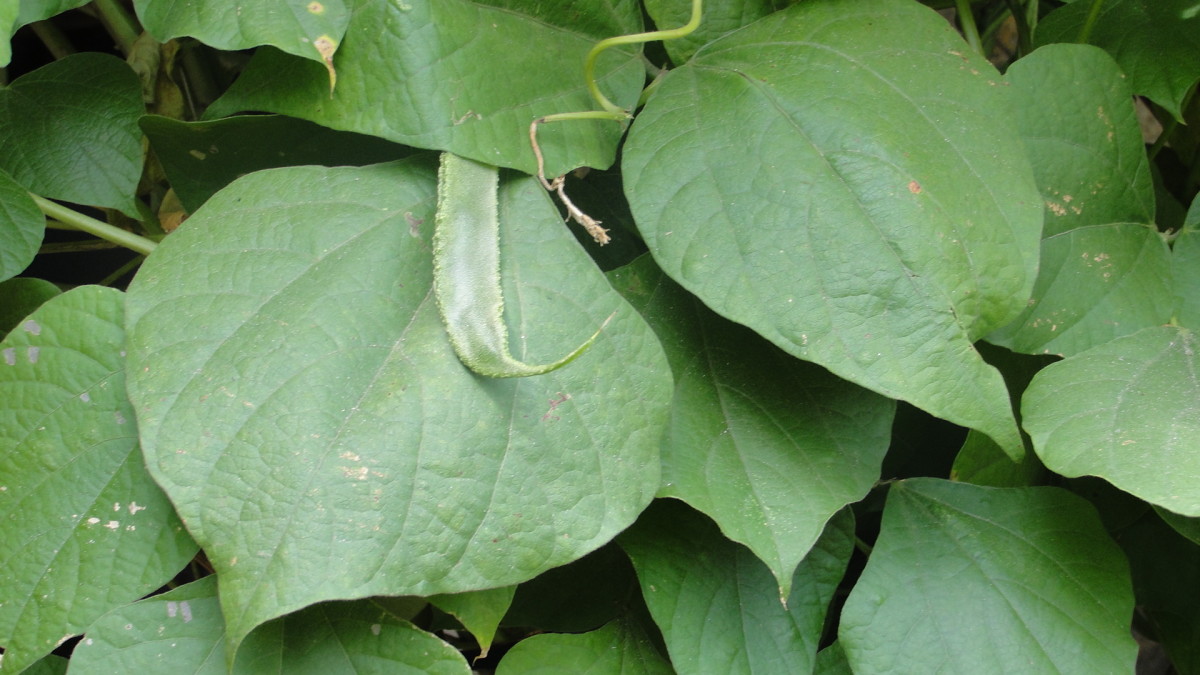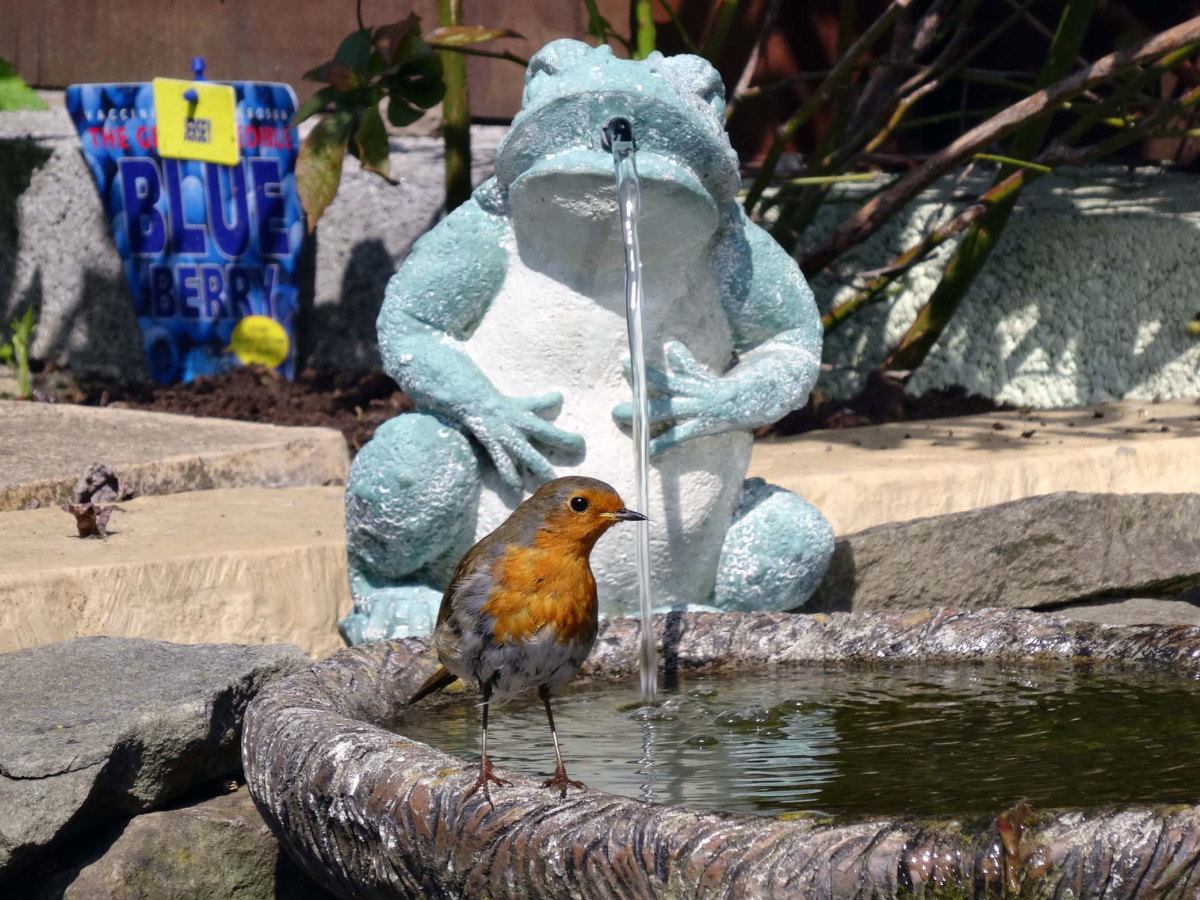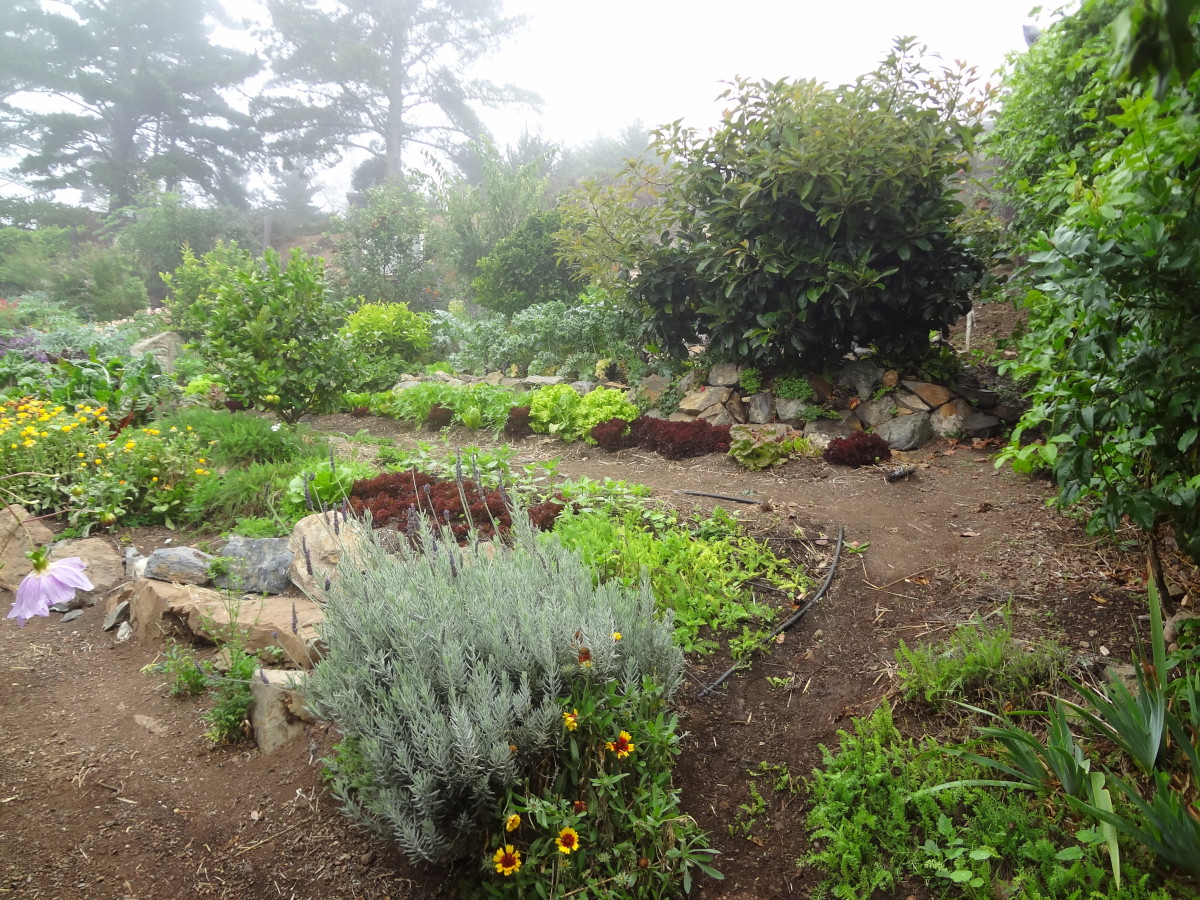- HubPages»
- Home and Garden»
- Gardening»
- Organic Gardening
Summertime Crops - How to Grow Pole Beans
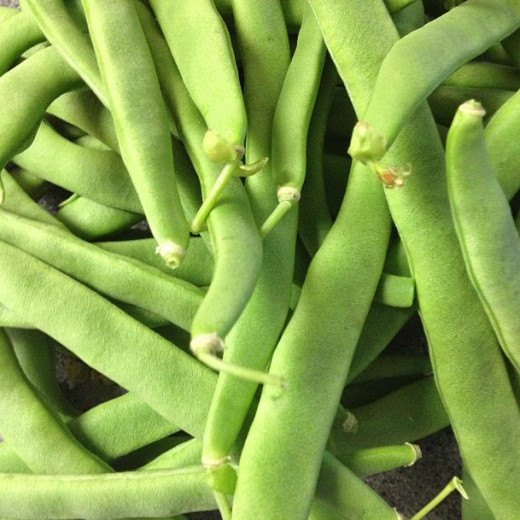
Summer gardening, bring on the Pole Beans!
One of my favorite summer crops as an urban organic gardener in Southern California are beans. Beans come in two varieties, pole beans or bush beans, and can be prepared a variety of ways using dried beans or fresh pods. Pole beans are a wonderful summer treat for any backyard organic gardener. Pole beans, unlike bush beans, take up little planting space allowing you to maximize your space as the plants grow upwards and vertically. Pole beans require some type of trellis or support, and training your bean runners along guided paths can aid in ease of harvesting.
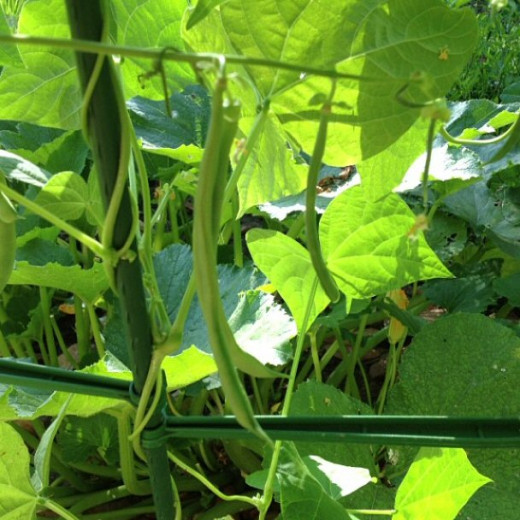
Planting Pole Beans
Bean plants do not like to have their root systems disrupted and typically do not transplant well. It is best to sow beans directly into the garden or container you wish to grow them in when the soil temperatures reaches around 60˚F, or at least a week after the last expected frost. Young bean plants can be very sensitive to cold so the temperature of the air and soil can play an important role in the success of your plants.
When picking an area to plant your beans you should consider that pole beans require at least six hours of sunlight a day and are best grown in full sun with well-drained soil. If you are practicing companion planting, pole beans are great companion plants for carrots, cucumbers, and corn. Press beans into the soil at a depth of 1” spacing 3” to 6” apart, lightly cover with soil, and place rows about 24” apart. Pole beans can also be planted in hills, planting four seeds at a depth of 1” evenly spaced around the hill. Pole bean seeds can easily rot in wet soil so it is important to keep well drained soil during germination. Germination should take place in 8 to 10 days.
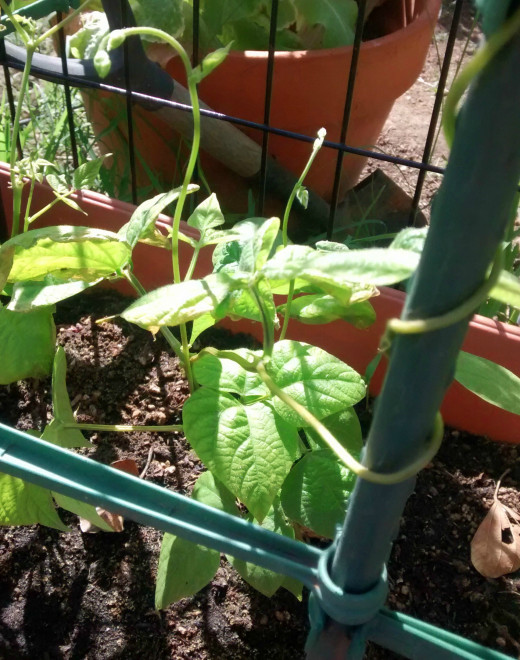
Growing Pole Beans
After germination pole beans prefer even moisture and require watering at least twice a week. Beans have shallow roots, and do not tolerate soil that is too soggy or dried out. Using mulch or black plastic can help maintain even soil moisture, and will also discourage any weed growth. Avoid top watering or getting the leaves wet when watering your bean plants. Pole beans are vulnerable to leaf burn and powdery mildew both of which can be encourage by moisture collecting on the leaves.
Pole bean plants need a 6’ to 10’ high support and can be grown on fences, trellises, garden teepees, or just gardening stakes or poles. Young bean plants may need some training to encourage climbing up their given support. Your plant will begin to develop runners, the long stems that will grow upwards, and latch onto whatever it can for support. More leaves and the flower blooms will develop out of the runners as they trail upwards.
Young runners of the plant need to be moved towards its support to encourage it to twirl and trail up the support pole or trellis. Once a runner has begun to twirl it doesn’t need any more movement or training. However, runners can sometimes grow too closely together twirling around each other crushing potential blooms. Training your pole beans to grow where you want them to grow can really help ease of picking and maximize your harvest.
Harvesting Pole Beans
Expect your first harvest to be in 8 to 10 weeks after planting. Pole beans are vigorous producers, and have been known to produce 2 to 3 times as many beans as bush varieties. You can encourage continued production by picking beans every few days once your harvest begins. Depending on the variety of the beans, they should be picked when the bean pods appear full and plum. Other varieties of beans, for example Romano beans, are flat beans that are best picked before the pods begin to plum. Waiting too long to harvest beans can make beans have a woody texture and bitter taste. For more tender beans pick them when they are no thicker than a pencil. A single bean pole plant can easily yield a pound of beans. Fresh, young, and plum bean pods are the best for eating, but beans can also be canned or lightly blanched then frozen.
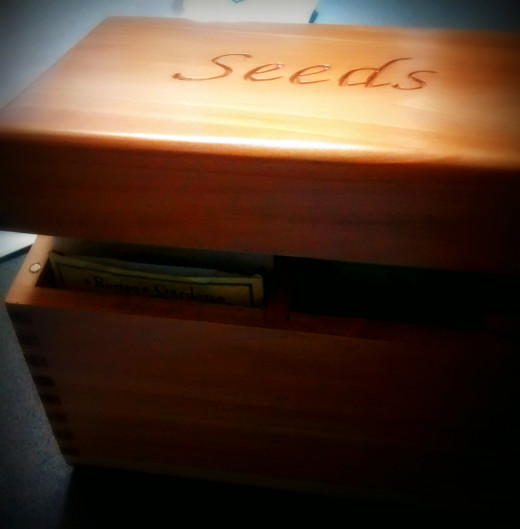
End of Harvest & Seed Saving
Pod setting diminishes quickly when temperatures reach over 90 degrees. Towards the end of the growing cycle allow some bean pods to dry completely on the vine for seed saving. When the beans are ready to be removed from the plant the pods with be a light brown color, the beans will become loose from the pod, and rattle inside. Remove the seeds from the pod and make sure they are completely dried out before storing them in a cool dry location for next year’s planting. Only save seeds from healthy plants as plant diseases can be passed through the seeds. With proper storage seeds can be saved for up to five years.
Favorite Varieties of Pole Beans
Kentucky Wonder Pole Beans - This bean is a long time American favorite that at one time was the most cultivated bean in America. Kentucky Wonder is known for being one of the most ideal and easiest to grow pole beans. Kentucky Wonder beans have meaty pods and maintain good flavor even at larger sizes.
Kentucky Wonder Wax Pole Beans - A hybrid variety of the Kentucky Wonder, this is thought to be one of the most popular yellow wax bean varieties for home gardeners and open air markets. Tender beans have excellent taste fresh, canned, or frozen.
Fortex Pole Beans – Fortex is often thought of as the best green been available. These French style beans are known for their plum, firm texture and stringless bean pods. This variety of green bean holds flavor well even at larger sizes.

